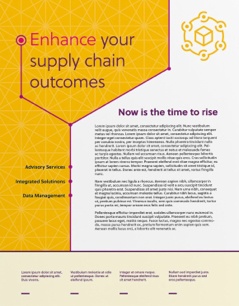 The way that inventory is managed in hospitals is changing. In the past, it was normal for healthcare organizations to have a surplus of inventory. Physicians had to be served, nurses had to be able to find what they needed quickly—and it was the supply chain’s responsibility to make sure there was inventory everywhere for everyone.
The way that inventory is managed in hospitals is changing. In the past, it was normal for healthcare organizations to have a surplus of inventory. Physicians had to be served, nurses had to be able to find what they needed quickly—and it was the supply chain’s responsibility to make sure there was inventory everywhere for everyone.
That does not work today, as competition is fierce. Between the Affordable Care Act and tight insurance reimbursements, the business environment has become increasingly challenging for hospitals. Poor inventory management can tie up precious resources and strangle an organization. Billions of dollars are wasted. Expired products are tossed out each year. And as much as 30 percent of the physician preferred inventory is lost.
What does all this lead to? In addition to a surplus of inventory, it’s also a catalyst for inventory inaccuracy: less than 80 percent of data is precise, compared to world-class manufacturing, which is around 99.5 percent. Ultimately, this impacts decision-making.
It’s time to be proactive in our decision-making by finding ways to get accurate data. It’s time to make clinicians’ lives easier by taking them out of the supply chain business so they can focus on what they do best: improving the life and well-being of patients.
Reversing the Approach with Technology
Integrating technology and improving workflow are key. And compliance and accurate data are the objectives. By synchronizing technology and workflow, it’s possible to simplify the work of not only the clinical staff but also the supply chain. With compliance comes accurate data. And with accurate data, the supply chain can make decisions to impact its organizations now and in the future.
There are four supply chain technologies available today:
- Kanban, a sight-based solution, was originally developed in the automotive space to improve inventory management through signs and cards. Hospitals began using it to manage supplies, and improvements were derived. Today, some vendors are blending technology and Kanban to manage periodic inventory.
- Weight-based solutions made their way into the supply areas in the 1990s. These systems can effectively manage periodic supplies right down to a single Band-Aid. These systems are still in use today in many hospitals. There are also drawbacks to the technology.
- Barcode solutions have been around a long time and, in lower-volume situations, have merit. They can be used almost anywhere in the hospital, from the loading dock to the procedure room. There are certainly drawbacks, however, which include having to scan each item every time it is moved or damaged, and illegible bar codes.
- RFID (radio-frequency identification) is being used more and more for inventory tracking purposes. Although RFID has been around since the 1950s, its current cost now makes it a feasible solution. RFID readers can automatically track and trace items from receipt to utilization with almost no human intervention. Plus, the reliability is close to 100 percent. Compliance occurs automatically for the most part, with minimal intervention required from clinical staff.
Standardizing the Process with Point-of-Use Solutions
With so many options, it’s important to standardize your processes and technology so that teams know exactly what they have and what they’ve used. Point-of-use (POU) solutions are designed to simplify day-to-day supply chain management by automating functions such as inventory management and information capture.
Only a few years ago, it was almost impossible to take an inventory transaction from a POU solution and upload it automatically to EMR (patient records, billing) and ERP (reorder) applications. Today, SSO (single-sign-on) functionality enables clinical staff members to populate not only the inventory system but also EMR and ERP systems with one transaction. FDA recall data is now integrated so that teams can literally track a recalled item to the shelf space it is sitting on.
The result? No more discrepancies. Teams can now identify products that will expire, giving them an opportunity to make decisions before these items expire. POU solutions enable teams to track consigned inventory from each vendor, so they know exactly what they have and what they’ve used. Say goodbye to sticky notes, colored stickers, and other outdated methods of tracking—and say hello to the future of POU.







Comments